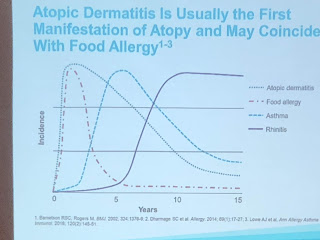As cannabis is “an allosteric modulator of μ- and δ-opioid receptors”; should it’s promotion be regarded similarly as that if opioids?
What about asking our pharma partners to put say 50% of their marketing genius and financial resources towards promotion of self-management education while promoting their products?
What I see lacking in the process of legalization of cannabis is any substantial public campaign to educate the public on the harm of the non-medical and medical use of cannabis.
As in the case of most medications, the promotion of and education on the medicinal use of cannabis is mostly funded directly or indirectly by the producers.
I read in Wikipedia, “..in vitro studies indicate CBD may interact with different biological targets, including cannabinoid receptors and other neurotransmitter receptors,[9][12]as of 2018 the mechanism of action for its biological effects has not been determined...It is an allosteric modulator of the μ- and δ-opioid receptors as well.”
While I have no clue how CBD actually works, it being both psychotropic and analgesic means it is a potential substitute or quick fix solution for dealing with pain and suffering.
My approach is similar for all medications and substances with potential addiction properties.
I explain to them that no one (for emphasis of course, I point out the obvious) including myself is immune to addiction; that given the situation, anyone can become addicted. (They usually don’t believe me at this point)
I then explain to them the mechanism or cycle of addiction (fear of some suffering/ craving for end of it; seeking a quick relieve / a substitute solution; relieve from suffering; effect of quick solution begin to wear out; triggers the fear of suffer... then the cycle’s intensity compounds); I talk about some real life examples; and there is no lack of stories. By now, they begin to see how addiction applies to them personally.
I begin with discussion to help them discover the root of their pain and sufferings. I then help them understand the lengthy list of unintended and serious side effects of the substitute solution ( Eg. Increased risk of falls in seniors on psychotropics; respiratory arrest on opioids and benzodiazepines, cannabinoid hyperemesis syndrome, worsening anxiety or onset of psychosis associated with chronic use of cannabis, etc.) I try to use examples most relevant to the individual.
I ask them and help them identify what is the suffering they are hoping to alleviate.
I then offer them a real solution to their sufferings. (Eg. A Basic Wellness Messages)
In my experience, above approach has resulted in various satisfactory outcomes; many embrace the knowledge and come to attend my wellness groups and learn more about the Basic Wellness Messages.
Some are disappointed but still respect the time spent and reasoning; none leaves with a quick fix or substitute solution without a clear understanding and an agreement on a solid plan to eliminate the substitute with the real solution.
One young man asked me for lorazepam to help him sleep. He had been suffering panic attacks and had not slept much for 6 nights. He managed to struggle through each night using the Breath Awareness Meditation I had taught him. He said he was able to sleep last using the lorazepam his mom gave him. He said her mom wants me to give him a prescription for the same. I reminded him about his experience with Cannabis. About a year ago, he disregarded my warning that cannabis will likely worsen his anxiety and had persisted on using cannabis to deal with anxiety. He finally did stop using cannabis as his panic attack did increase and were associated with frightening attacks of globus. On his last visit to me he was deeply grateful for being able to finally quit cannabis using BAM. He said the globus was so frightening that he will never touch cannabis again.
I then told him the use of lorazepam as a substitute solution will only worsen his problem with panic attacks. I also told him that if I give him lorazepam I would have nullified his 6 nights of valiant struggle that prevailed using BAM. I reassured him that if he is no worse for wear after 6 nights of panic attacks; he will be just fine again. I reminded him how much stronger he had become. I reminded him of his success overcoming his dependence on cannabis. I reminded him to try leaning into his discomfort and welcome the experience with acceptance and equanimity. He finally told me hesitantly that he will trust me and give it a try and overcome his anxiety using BAM.
Another patient (John) reflected that he now feels a peace that was never possible before. He used to be afraid to leave the house in the day for the fear that he will become enraged at strangers and cause them bodily harm. Now John meditates daily with his wife and eats 400 grams of non-starchy vegetables per day. He enjoys great relationships with his wife, daughter and his grandchildren. He told me he will grow a vegetable garden this spring.
Over the years, he managed to wean himself off opioids, alcohol while on cannabis. He told me he made cannabutter and baked brownies. He gradually weaned himself off the brownies as well. Next he quit tobacco. He now manages his chronic back pain without any substance but by addressing his real need for wholefoods, appropriate physical activity, a sense of equanimity with everything (including his back pain), an improved ability to pay attention to what is important and a sense of self-compassion.
For type 2 diabetes, John’s HbA1C was 11.1 on SGLT, DDP4 and metformin in 2016. His last HbA1C was 5.5.
https://www.whatisharewithpatients.com/2019/02/physician-relationship-with.html?m=1










